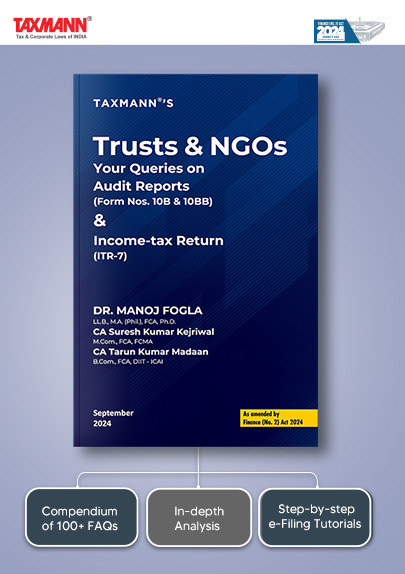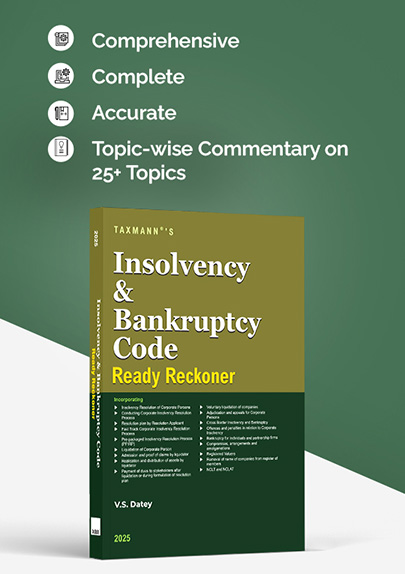[Opinion] Streamlining Taxation for Non-Profit Organizations | Key Reforms in the New Income Tax Bill, 2025
- Blog|News|Income Tax|
- 2 Min Read
- By Taxmann
- |
- Last Updated on 26 February, 2025
Krishan Shaw & Utkarsh Tulsian – [2025] 171 taxmann.com 679 (Article)
The landscape of non-profit organizations (NPOs) in India has been evolving, necessitating updates to the regulatory framework governing their operations and taxation. The Income Tax Act, 1961, has long provided the foundation for the tax treatment of charitable institutions. However, with the changing socio-economic environment and the increasing complexity of non-profit activities, there was a pressing need for a more streamlined legislative framework.
The new Income Tax Bill, 2025, aims to address these needs by simplifying and consolidating the existing provisions in relation to the registration, taxation, and compliance requirements for NPOs. In this article, we have discussed the approach of the lawmakers while redrafting the provisions related to registered NPOs and some of the major changes specifically introduced to simplify and streamline the provisions that are applicable with effect from 1st April 2026.
Approach of the new bill
- The existing Act employs varied terminology across different provisions, referring to entities as trusts, institutions, universities, educational institutions, hospitals, etc. To align with international practices and enhance consistency, the new Bill standardizes these references under the unified term “registered non-profit organization.”
- Historically, the Income Tax Act, 1961 contained various provisions addressing the tax regulations and compliances for NPOs which were dispersed across numerous sections, such as Section 2(15), Section 11, Section 12, Section 12A, Section 12AA, Section 12AB, Section 13, Section 115BBC, Section 115BBI, Section 115TD, Section 115TE, Section 115TF and Section 80G(5). The new bill aims to streamline these provisions by merging them into a unified chapter i.e. Part B of Chapter XVII. This consolidation is intended to simplify compliance requirements and provide greater clarity for the taxability of NPOs. As a result of this streamlining effort, the total word count has been significantly reduced from approximately 12,800 words to 7,600 words, enhancing clarity and conciseness.
- The newly organized Part B of Chapter XVII is systematically divided into seven subparts, each addressing a fundamental aspect of non-profit organization (NPO) regulations:
-
- Registration process & rules for switching over of regimes
- Income and its application by registered NPOs
- Commercial activities by registered NPOs
- Compliance requirements such as books of accounts, tax returns, and audits
- Violations and its implications
- Approval for donations
- Interpretations
Click Here To Read The Full Article
Disclaimer: The content/information published on the website is only for general information of the user and shall not be construed as legal advice. While the Taxmann has exercised reasonable efforts to ensure the veracity of information/content published, Taxmann shall be under no liability in any manner whatsoever for incorrect information, if any.

Taxmann Publications has a dedicated in-house Research & Editorial Team. This team consists of a team of Chartered Accountants, Company Secretaries, and Lawyers. This team works under the guidance and supervision of editor-in-chief Mr Rakesh Bhargava.
The Research and Editorial Team is responsible for developing reliable and accurate content for the readers. The team follows the six-sigma approach to achieve the benchmark of zero error in its publications and research platforms. The team ensures that the following publication guidelines are thoroughly followed while developing the content:
- The statutory material is obtained only from the authorized and reliable sources
- All the latest developments in the judicial and legislative fields are covered
- Prepare the analytical write-ups on current, controversial, and important issues to help the readers to understand the concept and its implications
- Every content published by Taxmann is complete, accurate and lucid
- All evidence-based statements are supported with proper reference to Section, Circular No., Notification No. or citations
- The golden rules of grammar, style and consistency are thoroughly followed
- Font and size that’s easy to read and remain consistent across all imprint and digital publications are applied






 CA | CS | CMA
CA | CS | CMA


